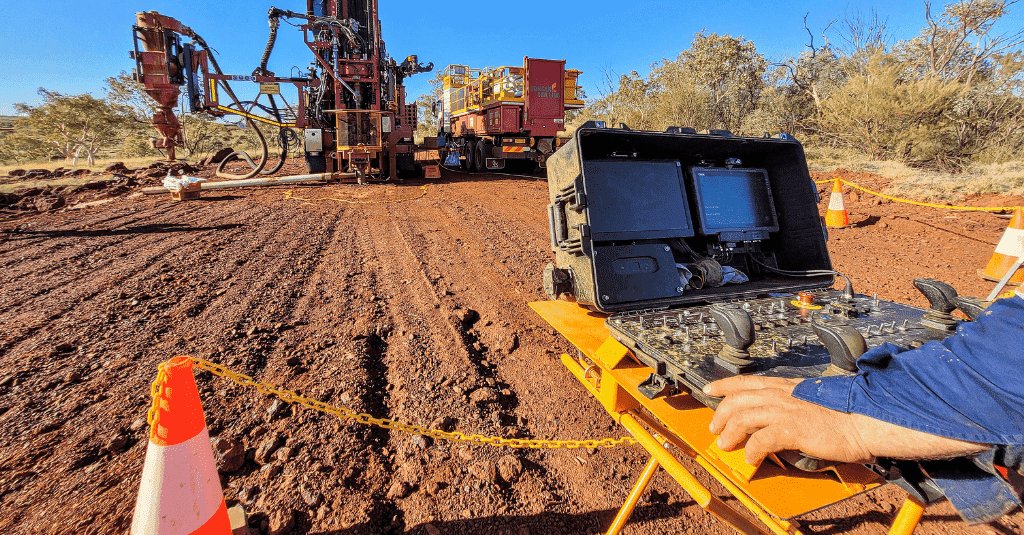Frank Baldrighi is Getac's Business Development Manager in Australia and New Zealand. Frank has over 15 years' experience in the tech industry, specializing in partner sales strategy and direct business relationships.

Getac Select
A combination of rugged computing devices, software, accessories and professional services in a purposeful range of specifically tailored solutions.
Getac Video Solutions
Video capture, evidence management, rugged hardware and robust software solutions for law enforcement and other industries.
Defense
Mission-critical COTS computing that delivers high powered processing and reliability in operational environments
Public Safety
Law Enforcement, EMS, Fire & Rescue applications
Utilities
Smart Meter Reading and Installation, On-site Safety, Utility Asset Management, Workforce Management for Utilities, Mobile GIS, Surveying and Mapping
Transportation & Logistics
Railroad Management, Airport Management, Port Management, Long-haul Delivery Fleet Management, Warehouse Materials Handling
Industrial Manufacturing
Industrial Programming and Robotic Control, Facility management, Compliance and Inspections, Workforce Management, Inventory and Warehouse Management, Factory Automation and Plant Monitoring, EAM and CMMS Solutions.
Automotive
Optimized Rugged Mobile Solutions to drive a smarter approach throughout the automotive value-chain.
Natural Resources
Mining, Forestry and Construction applications
Oil & Gas
Remote Support, Asset Management, Field Data Analysis, Workplace Safety
What value do you want to gain for your business? Which efficiencies will make your bottom line more profitable? Digital transformation is not simply about digitizing operations. Instead, it is a looping process meant to clarify these answers for every enterprise and then use technology to achieve the desired results.
Leveraging technology to drive profitability is not new in business operations. What is relatively new is the merging of computing power, network infrastructure, and an increase in data from fresh sources. This powerful combination makes it possible to derive insights from processes that have been opaque for a while. Even better, businesses can access the information they can act on in real-time and on the go. The number of incremental benefits quickly adds up to substantial gains.
You already know that data drives business. That is especially true for digital transformation as data feeds several key technologies in its ecosystem. Rugged devices and tablets in various industries–manufacturing, automotive, transportation, public safety, natural resources, oil and gas–play an essential role in digital transformation. They serve as a platform to access information on the go and to act on insights.
The lessons from the early days of the COVID-19 pandemic have become clear:
The goal of digital transformation is to move businesses along a custom prescribed path–from beginning automation to autonomous operations. Along the way, enterprises will pass various milestones that mix a certain amount of human involvement and orchestration into the process.
The key for asset-driven industries is to work backward from desired goals and establish the key performance indicators to measure progress toward those goals. The work of digital transformation involves breaking down business operations into bite-sized processes that can be orchestrated or automated using one or more technologies.
Data, the foundation of digital transformation, drives several technologies to deliver enterprises' desired results.
A few of the many technologies that underpin digital transformation include:
Exactly which of these technologies comes into play in asset-driven industries depends on the digital maturity of the company and the KPIs they hope to measure. Industries that need remote collaboration on the road can lean on AR and MR using rugged tablets and devices. These technologies knit together under the umbrella of digital transformation.
Until recently, asset-driven industries such as manufacturing, utilities, oil and gas, transportation, logistics, and more, suffered from a data disconnect between the road and work. Employees had to call corporate headquarters or a field manager with a better view of operations. All this just to figure out which task to attend to next or where a replacement part was in the inventory. Machine parts got replaced whether needed or not, shutting down production unnecessarily.
Digital transformation helps alleviate a few pain points for these industries. A checklist of must-haves for operational efficiencies in these sectors includes:
Since industries like manufacturing, automotive, transportation, public safety, natural resources, and oil and gas often work with aging infrastructure, efficiencies in business operations usually derive from harnessing data from these machines (operational technology or OT) and integrating them into IT processes. Integrating the two comes with various challenges, including data usability and formatting, data security, and messaging and device compatibility, but forms one of the foundations of digital transformation.
In an efficient operation, the work comes to the worker instead of the other way around. Employees need to access insights on the road instead of being constrained to a desktop.
Workers who access information on the go need devices that can withstand the rigors of harsh environments.
Employees on the road need access to the same information as everyone else in the enterprise. One of the promises of digital transformation is that it enables real-time insights into which workers can act. As a result, all information needs to be accurate and centralized so everyone is on the same page.
A higher level of digital maturity delivers the ability to orchestrate and automate operations up and down–right from vendors down to customers.
When done right, digital transformation will need a light touch from humans, allowing workers to check in on machines from remote locations and manage entire fleets of operations.
Predictive machine maintenance is one of the many exciting possibilities of digital transformation. The promise is that enterprises outfit machines and other infrastructure assets with IIoT-enabled sensors. These machines measure critical parameters such as temperature, vibration, and more. Long-term gathering and analysis of such data in machine learning models enable enterprises to tell when there’s trouble ahead. If a machine's temperature profile looks different from usual, for example, workers can program systems to alert operators to evaluate the machine’s health.
Such monitoring enables enterprises to avoid expensive downtime and fix machines only on an as-needed basis. Predictive maintenance is not the only bottom-line boost that digital transformation delivers. The biggest promise of digital transformation is that it can be applied to practically all operations across an enterprise. Small gains in efficiencies add up to significant savings.
A logistics company, for example, can use artificial intelligence to proactively tell when package labels are not glued on and adequately alert vendors who repeat the pattern. They save time instead of having to reroute packages to workers who must fix improperly addressed packages. On the field, workers can use data from individual utility trucks to optimize routes and plan worker schedules for fleets. Inventory management can be automated, and supply chain anomalies are noted faster with automation and machine learning models. The possibilities with digital transformation are endless.
Another advantage is that gains often add up significantly. Enterprises can start small. As companies move along the path to greater digital maturity, they can optimize operations further in an iterative fashion. In that sense, digital transformation is a mindset, not a one-and-done process.
Beyond more efficient business operations, data-driven digital transformation can deliver more visibility into bottlenecks up and down all departments in organizations.
Companies can deploy workers strategically and access opportunities to deliver superior customer service. For example, field service on the road can find replacement parts from other road operators instead of rescheduling service calls.
According to a McKinsey research report, 70% of enterprises that had taken on digital transformation reported in 2020 that their momentum had stalled. It is worth understanding the reasons–culture or scale for example–causing the slowdown as payoffs can be impressive. Digital transformation can lead to more efficient operations, with enterprises enjoying autonomy beyond their operations. An entire ecosystem with data transparency functions more smoothly as inefficiencies are easier to pinpoint and fix.
Rugged mobile devices form an invaluable part of the digital ecosystem. They connect workers to vital information necessary to keep operations running. Employees can use a rugged mobile device for asset management software or enterprise resource planning systems to troubleshoot problems quickly and efficiently whenever worker intervention is called for. Workers using rugged mobile devices also allow for the easier digitized recording of processes, so the enterprise always has a record related to every machine.
Looking to lean on advanced technologies, enterprises are taking a careful look at their business operational workflows and finding ways of improving the bottom line. In the future, expect digital transformation to be a mindset, a way of life for enterprises as they move toward autonomy. The rugged mobile device will be essential today and tomorrow. Its secure and open architecture enables enterprises to use it as a communications platform now and into the future.
Frank Baldrighi is Getac's Business Development Manager in Australia and New Zealand. Frank has over 15 years' experience in the tech industry, specializing in partner sales strategy and direct business relationships.


